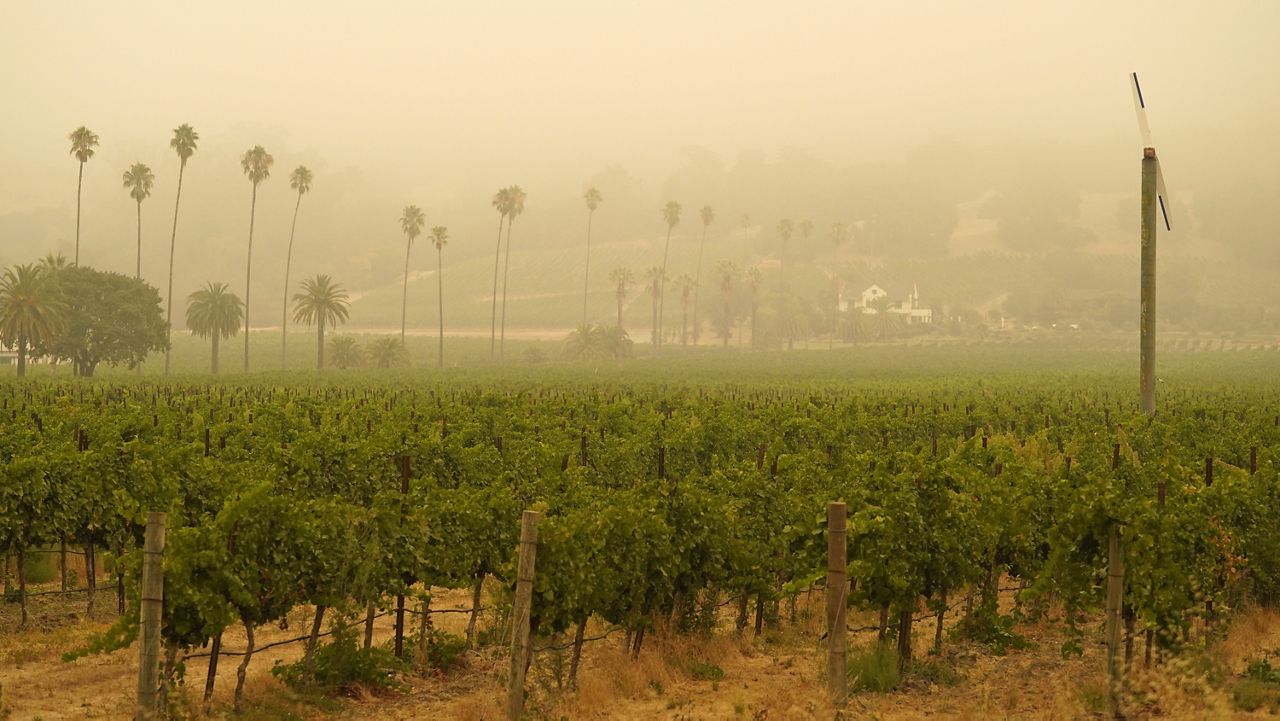As wildfires become more common, research on the health impacts is growing. A study from the University of British Columbia found that during Canada’s wildfire season, more ambulances were dispatched to treat heart and respiratory issues within just one hour of exposure to smoke.
Another study published in the Journal of the American Heart Association found the risk of California residents experiencing cardiac arrests on the second day of wildfire smoke, was 70 percent higher, than on days with no smoke. The impact was greater among lower income residents.
Dr. Sonali Bose, a pulmonologist with the Institute for Exposomic Research at Mount Sinai says over the past several decades researchers like herself have developed a clearer understanding of the health impacts of particulate matter, a major component of air pollution.
While large particles from ash and soot can irritate the eyes and throat, fine particles of dust, dirt, and smoke can cause damage by entering the lungs and the bloodstream.
“Anything that's toxic that's going into the lungs may cause inflammation," Bose said. "It may cause problems with lung function, which generally grows and increases early in life until you reach peak lung health. Patients with asthma or COPD may have more manifestations of their underlying disease."
"Because of this inflammation and because of the exposures, they may experience more asthma attacks, more respiratory symptoms because of their underlying disease,” Bose added.
The smoke-filled air is one more assault on a mounting list of health crises threatening Americans on the West Coast, and increasingly their neighbors across the country as winds sweep contaminated air to the East.
“We're entering into the fall where flu season is coming upon us," Bose said. "You know, the regular run of the mill upper respiratory infections are always higher in the fall as well. So it's going to be a tough fall, I think, with all these things coinciding. Definitely exposure to particulate matter and other inhaled exposures can increase your risk of upper respiratory infections already."
Not to mention the stuttering chains of coronavirus transmission.
It’s still too early to know exactly whether high exposure to particulate matter increases the risk of getting, or the severity of, a COVID-19 infection – but research has shown flu seasons are worse after heavy wildfires.
“It's basically that the respiratory system and all the defenses that it has is already inflamed, it's compromised. Now you add on to that a virus that enters your respiratory system and you’ve less defenses than you did before. So although we don't really understand the relationship between COVID and the wildfires yet,” said Bose, “I would be concerned about the vulnerability of people towards contracting another respiratory infection.”
There are a number of studies, few fully peer-reviewed, that link poor air quality to lower COVID-19 survival.
Dr. Sanjay Rajagopalan is the chief of Cardiovascular Medicine at Cleveland’s University Hospitals. His recent work looks at the impact of pollution on heart health.
While Dr. Rajagopalan says there is no cause for immediate alarm, increasing particulate matter in the air is cause for concern, even in states indirectly affected by the wildfires.
“We don’t know the exact health toll of such events," he said. "But intuitively and based on what we know about health effects of PM2.5 [particulate matter], one would predict that it is not entirely trivial."
He says no level of particulate matter in the air is safe, echoing concerns from the Lancet Commission on pollution and health – that pollution is the “single most important environmental factor presenting a risk to health.”
So what can we do now?
The CDC and local health authorities across the country are pushing harder than ever this year for people to get protected against the flu. CDC Director Robert Redfield says the agency purchased an additional nine million doses of the vaccine.
“I think this is a critical year for us to try to take flu as much off the table as we can as a respiratory pathogen that is going to cause people to be sick enough to have to go into the hospital,” said Redfield during an interview last month with The Journal of the American Medical Association.
Citing experience from New York City’s peak in covid cases, he said “It wasn't that the practice of medicine was not as good in New York, it was probably better than many parts of the country. But when the health system gets overwhelmed, we find that with COVID, this is where the mortalities seem to be the greatest.”
Experts say if you can afford a portable HEPA filter air purifier, that is one way to help protect against the growing threat of pollution. But you can also change the things you do in your home, to improve the indoor quality of air, the most obvious – not smoking.
“Other activities, such as dusting and sweeping and burning candles and incense,” said Bose, “also are big contributors to particulate matter. So some of the avoidance of these activities or household habits might help to reduce levels within the home.”
Bose also says, on poor air quality days, working out indoors may be a healthier approach to staying fit, particularly in areas that are experiencing the most heavy smoke pollution.
“Running increases your ventilation, which is essentially the amount of volume of air that you're breathing in and out in a given amount of time. And so you worry that you're inhaling all these particles and exhausts and other fumes into your system,” said Bose. “With the wildfires, I'd be personally a little wary about running outside and inhaling a lot of this in.”



